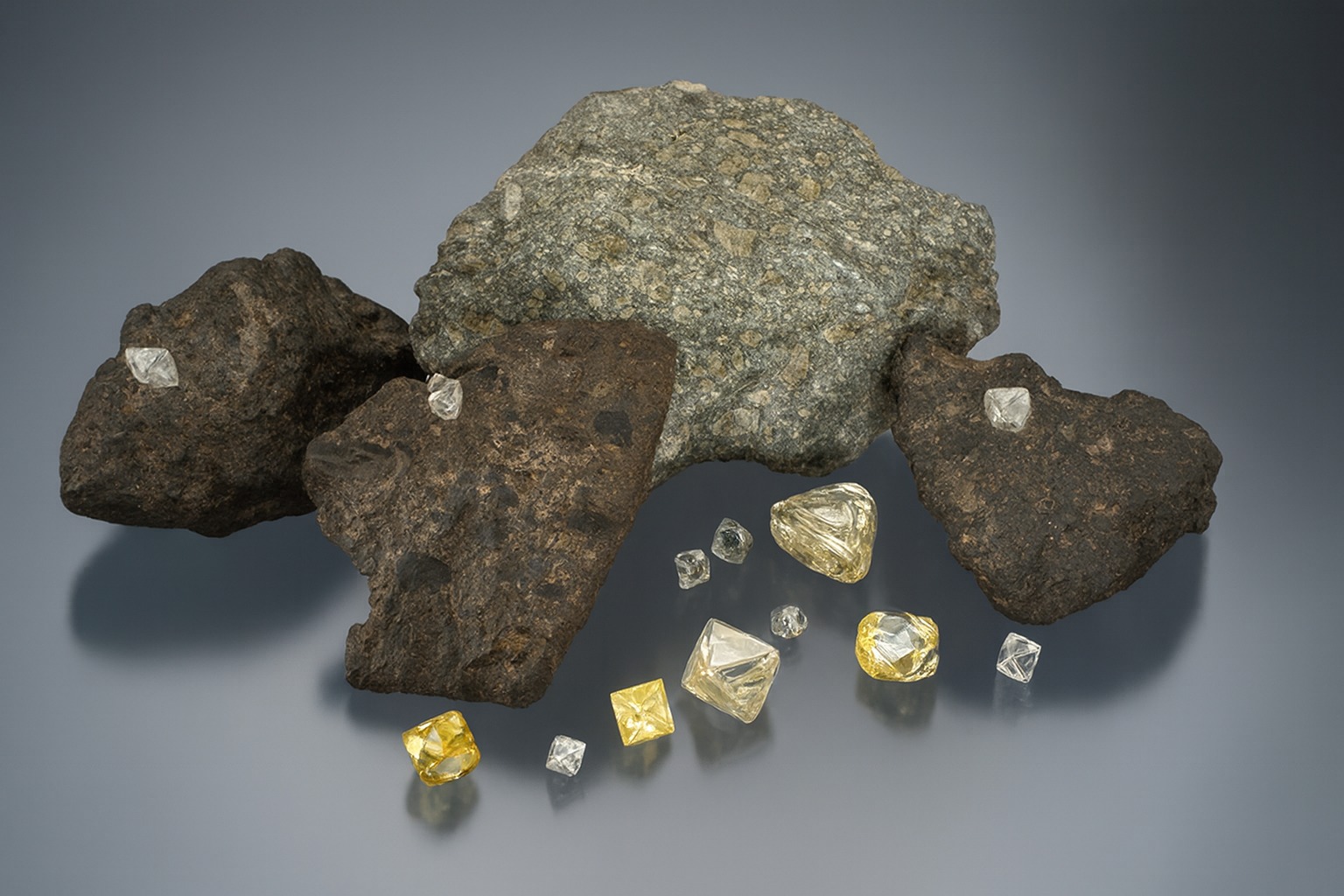Rare Treasures of Our Earth
Natural diamonds are unlike anything else you can own. They are not created in years or centuries, but over one to three billion years, deep within the Earth, under unimaginable pressure and heat.
Each diamond is a story of time, chance, and nature’s artistry. No human can recreate these exact conditions. That is why every natural diamond is unique, and why their rarity will only increase as Earth’s supplies decline.

Diamonds Born Deep in the Earth
Most diamonds formed about 150 kilometers beneath the Earth’s surface, in its thick and ancient roots. But some extraordinary stones—known as super-deep diamonds—come from as far down as 500–600 kilometers. This elite group includes:
- Type IIa diamonds — virtually free of nitrogen, representing only ~1–2% of all diamonds.
- Type IIb diamonds — containing trace boron, rarer still at just ~0.1% of natural diamonds.
Both are considered miracles of nature. Type IIb diamonds, whether faintly blue or in ultra-rare colorless form, rank among the scarcest gems on Earth.
Why Color Matters: The Whiter, the Rarer
Diamond color is graded from D (perfectly colorless) down to Z (light yellow or brown). True colorlessness is exceptionally rare:
- D color — fewer than 1 in 100 diamonds.
- E–F colors — about 1–3 in 100.
- G–H colors — about 1 in 10.
- I–J colors — about 2 in 10.
- K and below — the majority of diamonds.
- Fancy colors (blue, pink, green, red) — tens of thousands of times rarer than near-colorless stones.
Owning a D-color diamond means owning a treasure rarer than 99% of all diamonds ever mined.
Why Clarity Matters: Peering Through Purity
- Flawless (FL) — fewer than 1 in 200 diamonds.
- Internally Flawless (IF) — about 1 in 100.
- VVS clarity — around 5–7 in 100.
- VS clarity — about 15–20 in 100.
A D-color, Flawless diamond is among Earth’s rarest treasures—fewer than 1 in 10,000 gem-quality stones reach this level.
From Rough Stone to Masterpiece
When mined, a rough diamond bears little resemblance to the jewel it may become. It takes a master cutter to unlock its beauty—and in the process, nearly half of the rough weight is lost. What remains is refined brilliance—fiery, permanent, and sublime.
How Rare Is a Fine 1-Carat Diamond?
One carat is the universal benchmark of elegance—but matching size with exceptional quality is rare indeed.
- From one million carats of rough mined:
- About 200,000 carats become gem quality.
- Only 40,000 carats survive as polished gems over 1 carat.
- The Elegant Benchmark: A 1-carat, H-color, VS2 clarity, Triple Excellent cut (no fluorescence). Globally, only 2,000–4,000 stones meet this standard—less than 0.5% of gem-quality diamonds.
- The Ultimate Treasure: A 1-carat, D-color, Flawless or Internally Flawless, Type IIa or Type IIb, Triple Excellent cut (no fluorescence). These represent ~0.001% of all diamonds mined—roughly 10 stones per million.
Rarity at a Glance
Imagine you are looking at 100 gem-quality diamonds:
- Only 1 will be D color — the purest white.
- Only 1 will be Flawless — completely without inclusions.
- About 5 will combine both top color (D–F) and top clarity (VVS or better).
- Around 15 will be near-colorless (G–H) with VS clarity.
- The rest will show more noticeable color or inclusions.
If we expand the view to one million carats mined:
- Just 2,000–4,000 diamonds will be fine 1-carat H/VS2 Triple Excellent gems.
- Only about 10 stones will be legendary 1-carat D-color, Flawless or Internally Flawless, Type IIa or IIb.
- At the absolute peak: D-color, Flawless Type IIb diamonds — so rare that only a few dozen are known worldwide.
The Two Peaks of Rarity
- The Purest Whites: D-color, Flawless Type IIb diamonds — among the scarcest diamonds ever discovered, counted only in dozens worldwide.
- The Rarest Colors: Fancy reds — so scarce that fewer than 30 significant stones are known across the globe.
These two categories represent opposite extremes of rarity:
- Perfect absence of color in the purest white diamonds.
- Intense presence of color in the rarest reds.
Whether purest white or most vivid red, a natural diamond is not just rare — it is one of the most exclusive creations nature has ever given us.





